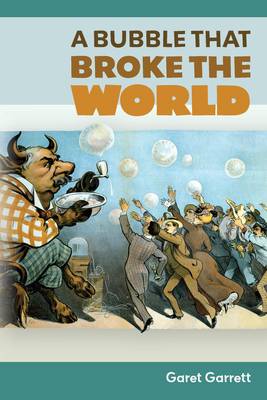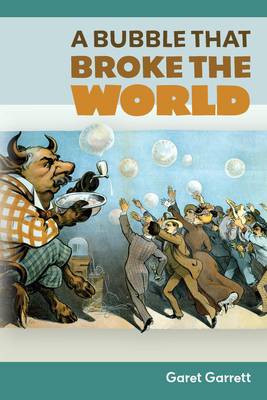
- Afhalen na 1 uur in een winkel met voorraad
- Gratis thuislevering in België vanaf € 30
- Ruim aanbod met 7 miljoen producten
- Afhalen na 1 uur in een winkel met voorraad
- Gratis thuislevering in België vanaf € 30
- Ruim aanbod met 7 miljoen producten
Omschrijving
A Bubble That Broke the World is a collection of articles by American journalist and author Garet Garrett. The work seeks to answer the question: "What truly caused the stock market crash of 1929, and the ensuing depression?"
Garet Garrett (1878-1954) began his journalism career at age 20, writing for the Cleveland Recorder in Chicago. Soon he was reporting on the McKinley administration from Washington, D.C. for the Washington Times. In 1900, he moved to New York where he would eventually write for the New York Sun, New York Times, Wall Street Journal, New York Evening Post, and Saturday Evening Post.
Rather than simply report dry facts, as most other business reporters did at the time, Garrett was unique for the way he brought life to these events. He infused his pieces with drama and personality, making his non-fiction and later fiction works so popular.
Through his books and his novels, it was clear that Garrett was a proponent of the free market. His novel Harangue: The Trees Said to the Bramble Come Reign Over Us depicts a failed socialist experiment and decries the tendency of the wealthy to fund the socialism that will be their downfall.
In 1932, Garrett published A Bubble That Broke the World, his explanation for the stock market crash of 1929 and the depression that followed-still gripping the country at the time of the book's release. The book is a collection of seven articles originally published in the Saturday Evening Post. Edited and compiled into one work, the articles are included in reverse order from when they were originally published.
Garrett argues that the crash of '29 was caused primarily by the American government's policy of over-issuing credit to foreign countries during and after World War I. In this contemporary account, written while the effects of the Great Depression were still being felt, Garrett explains that it is not capitalism that caused the trouble, but issuing credit to foreign powers that used it for non-wealth-building activities like public works and supporting inflated currencies.
To make matters worse, a great deal of the credit issued went to Germany, which had been decimated by the war. Germany borrowed to pay its exorbitant debts to the rest of the European nations. And the European powers used that money to repay their debts to the United States. In effect, the American Treasury was repaying itself.
Private debt followed, with investors clamoring to buy guaranteed foreign government bonds. With so much credit issued to European countries both publicly and privately, investment in domestic growth dwindled. And with so little money invested in wealth building and manufacture, a collapse was inevitable.
Garrett's opinion held that a market correction was needed, and that an unfettered free market was the best tool to make that correction. This was a far cry from the accepted wisdom of President Franklin D. Roosevelt, whose New Deal relied on public works and financial reforms to encourage economic growth.
A Bubble That Broke the World is a fascinating contemporary account of the economic crisis of the 1930s. Modern-day scholarship about that era focuses heavily on the New Deal, but is less vocal about the other viewpoints at the time. By studying the writing of Garet Garrett, we get a helpful reminder that history is more complicated than neat retellings would imply.
Unflinchingly steadfast in what he believed, Garrett would today be called a libertarian. He believed that free markets and minimal government intervention were the solution to the problems of the 1930s, and he would believe the same today.
Specificaties
Betrokkenen
- Auteur(s):
- Uitgeverij:
Inhoud
- Aantal bladzijden:
- 142
- Taal:
- Engels
Eigenschappen
- Productcode (EAN):
- 9781684930838
- Verschijningsdatum:
- 13/06/2022
- Uitvoering:
- Paperback
- Formaat:
- Trade paperback (VS)
- Afmetingen:
- 152 mm x 229 mm
- Gewicht:
- 217 g

Alleen bij Standaard Boekhandel
Beoordelingen
We publiceren alleen reviews die voldoen aan de voorwaarden voor reviews. Bekijk onze voorwaarden voor reviews.











